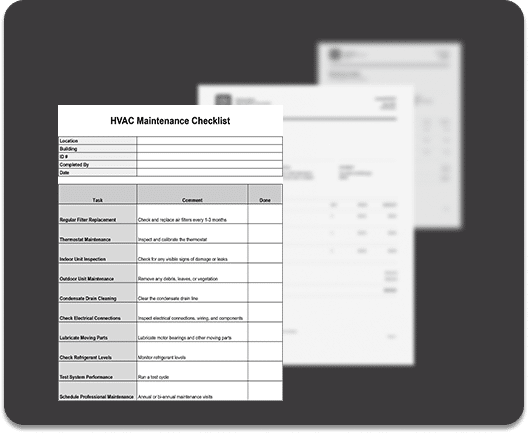Hiring for skills has its benefits. For company leaders who see the big picture, it’s just the first good step to great changes.
Everybody’s talking about it. And many companies are doing it. Google is doing it. Accenture, Bank of America, and IBM are doing it. Even the U.S. Office of Personnel Management is doing it.
What is the “it” that these organizations are doing? They’re all shifting their hiring practices to evaluate applicants based on skills, regardless of educational background. They are ending the college degree requirement for many job openings, shifting the focus to skills, experience, and cultural fit.
In this competitive job market, employer benefits of accessing a broader applicant pool are compelling. More potential employees. Faster time to fill open positions. A more diverse workforce.
But those benefits are just the beginning. For company leaders who see the bigger picture, hiring for skills is the first good step to great changes across the organization.
Skills-based hiring creates opportunities for new community relationships
When your company or government organization shifts to focus on hiring for skills, you open the doors to a broader talent pool. It also means that relying on tried and true college and university relationships is no longer enough to find the job candidates you need. It’s time to expand your pool of local and national organizations, groups, associations, and centers that refer job candidates to your company.
To actively invite people from diverse backgrounds to work with your organization, you’ll need to reach people across cultures, social environments, and educational statuses. As a leadership and recruitment team, focus on building relationships with organizations that are in touch with:
- Individuals who do not have high school diplomas
- Professionals returning to work after years away to attend to personal matters
- Citizens who have served time in jail
- Military veterans stepping into the civilian world
- People of all backgrounds who have not attended college or university
Hiring a diverse workforce can strengthen and diversify skill development programs
Hiring a more diverse workforce means more variability in the skills that “show up” at your workplace. You may be hiring people with excellent coding, language, and leadership skills who are first-generation professionals. Other new hires may have vast professional experience that’s decades old. Or some will have excellent technical skills that were mastered in a strict military or corrections environment.
A move to minimize college degrees does not single-handedly change the reality of some employees’ backgrounds. But a shift to focusing on skills rather than education does move employers away from the assumptions that come with relying on candidates’ educational backgrounds and self-reports (resumes). As our CEO has pointed out, “More often than not … a person with a college degree was assumed to have the knowledge and skills to match the job role.”
Now, you can rely on the more objective measure of employees to do their jobs: skills. Skills assessments during the hiring process give you baseline measurements to see strengths and skills gaps.
Results should guide onboarding programs that may include a mix of classroom, online, hands-on, virtual, and relationship-based training and development experiences such as:
- Job readiness skill development
- Technical skill training
- Soft skill training
- Apprenticeships
- Peer mentors
- Traditional mentorships
Employers’ skill development programs get more people involved and engaged
As employers take on more responsibility for workforce skill and competency development, more people across your company can get involved. Training and mentoring are opportunities for team members with a range of skill sets and skill levels from across the company to support the effort.
As a result, new employees get to meet more established and senior-level teammates, learn about their career paths and build relationships within and across the company. Current employees and leaders get to share their experience and skills with others, gaining recognition, valuable experience, and relationships with teammates who are new to the company.
If you’re reading headlines about the importance of employee engagement and the challenges of keeping a workforce engaged, onboarding and training is a natural way to involve and engage employees at every stage of their career.
Robust skills-based onboarding sets the stage for continuous skill development
Skills assessments are not just for hiring and onboarding. Ongoing skills assessments throughout an employee’s lifecycle provide clear feedback to employees and managers about skill mastery and skills gaps. They also normalize skills and competencies as the metric of record to guide career progression and success.
By leading with skills in the hiring process – and involving employees across the company in supporting teammate skill development – you’re establishing a new norm of measuring and tracking skills for success.
New employees experience a skills-based career development approach from day one. More established employees and managers get to see the value of skills-based feedback as they are training, managing, and mentoring new team members. It’s only a tiny step for your workforce to embrace a skills-based approach for their own development.
You’ll be able to feel the shift when you move into a skills-based learning and development culture. Team members will talk about career paths, promotions, hiring decisions, and work experiences in terms of desired and required skills. You’ll see people moving up in their careers. And, if you’re smart, you’ll see people moving around – from one career path to another – within your company.
We recently talked to a CEO of a commercial construction company that’s been around for decades. He’s a third-generation senior leader. In the meeting, the fifty-something man turned around in his chair in the high-rise office and pointed to a building he worked on as a laborer when he was 15. He’s not alone. The company has superintendents as well as HR, marketing, and legal professionals who started as a laborer or apprentice with the company years or decades ago. It’s no surprise that the company has robust internships, apprenticeships, and continuous training programs in place.
Continuous learning creates agile, community-connected employers of choice
Once you build a culture of continuous learning and skill development, you are well-positioned to future-proof your company. Instead of relying on outdated job descriptions and organizational goals, your leadership team, HR team, and workforce will naturally monitor the market for needed skills. It will be easier to keep up with evolving needs if reskilling and upskilling is just a part of how you manage the skill set of your workforce.
You’ll become a more agile company. You’ll become an industry leader in innovations and best practices. You’ll become a company that collaborates with partners and community organizations to keep your workforce skills sharp.
You’ll also become “that company” that gives back to the community by offering training and internships to professionals and young people interested in your field. Which also means that yours will be an employer of choice for people of all backgrounds to build their skills and careers.
THAT’s the big change that can come from skills-based hiring.
Is your organization making the shift to hiring for skills? Download our Competency Management Toolkit to get started with a skills and competency-based approach to hiring and workforce development. Or contact us to find out how Avilar’s WebMentor Skills™ competency management system could help.
RELATED RESOURCES
Skills-Based Talent Management: What is it? Why is it Important?
Why You Should Value Competencies and Skills Over College Degrees
Reskilling, Upskilling, and New Skilling: What’s the Difference? Why Does It Matter?
First-Generation Professionals: What Can You Do To Ensure They Succeed?


















